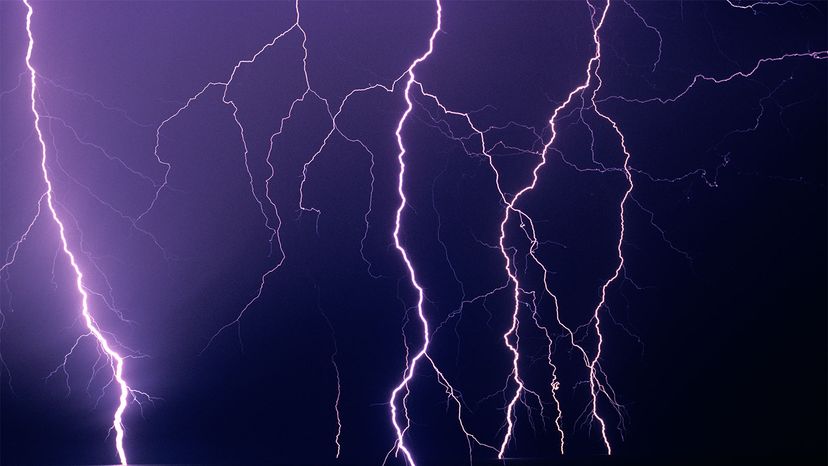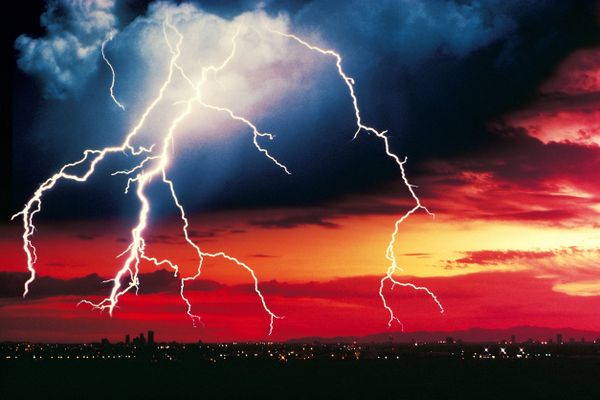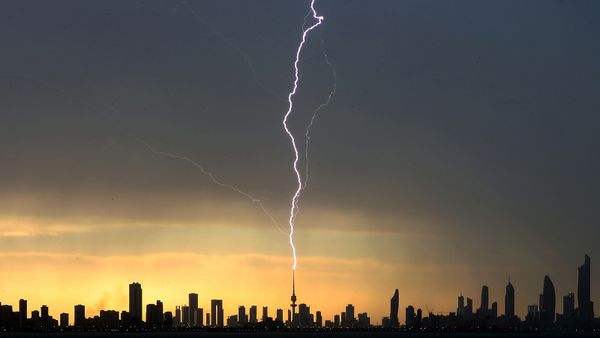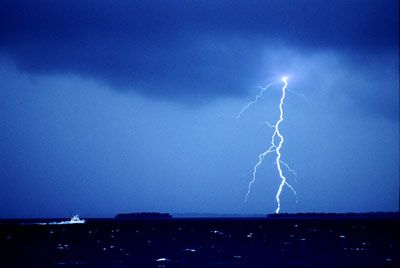
Lightning is the most beautiful and dangerous aspect of a storm. According to the National Weather Service, between 1989 and 2018, an average of 43 lighting-related deaths were reported in the United States each year. Only about 10 percent of the victims of lightning strikes result in deaths — usually from cardiac arrest or irrevocable brain damage — which is somewhat surprising, considering a lightning bolt is about 50,000 degrees Fahrenheit (27,760 degrees Celsius) — about five times hotter than the surface of the sun.
Although a lightning bolt is only about an inch in diameter (2 to 3 centimeters), it can stretch for miles. While most lightning bolts are 2 to 3 miles (3.2 to 4.8 kilometers) long, the world record flash was observed to stretch 477.2 miles (768 kilometers) across three U.S. states — Mississippi, Louisiana and Texas — in 2020. So the expression "out of the blue" is completely accurate — if you can hear thunder, it's possible, if not very likely, that lightning from a nearby thunderstorm can make it to wherever you are.
Advertisement
Something as powerful as lightning begins with a process that happens in your life all the time: static electricity. If you've ever shocked yourself on a doorknob after walking across a carpet in your socks, you experienced the pop of a tiny lightning bolt. Static electrical charge builds up whenever two objects rub together, and in the case of lightning, the objects are moisture molecules and ice crystals in clouds.
Clouds are one of the places moisture is held and collected in the water cycle. Clouds are formed gradually as terrestrial water absorbs heat from the sun and the surroundings until they collect enough energy to transform from liquid to vapor. A cloud you see is just a collection of water vapor, some dust and other impurities that hangs together in the sky, much like the water in a lake or ocean hangs together on the ground.
Precipitation like rain, snow and sleet occurs comes from clouds, obviously. But it happens as a result of water vapor rising higher and higher, and the temperature of the surrounding air becoming lower and lower. Eventually, the vapor loses enough heat to the surrounding air to allow it to turn back into a liquid. Earth's gravitational pull then causes the liquid to fall back down. If the temperatures in the surrounding air are low enough, the vapor can condense and then freeze into snow or sleet.
In the next section, we'll see what causes electrical storms.


